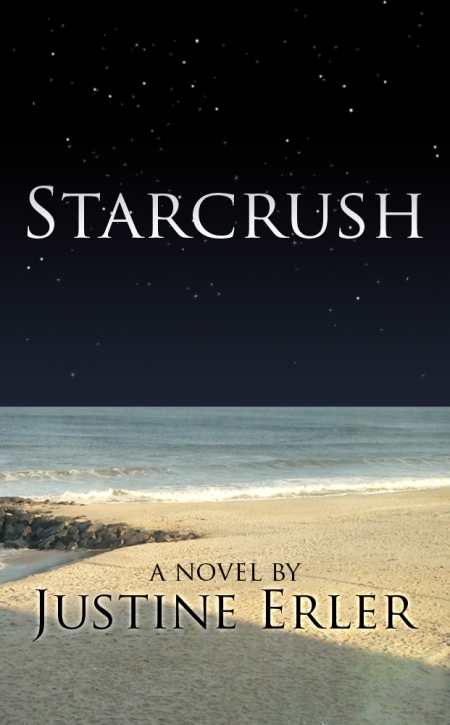Starcrush
Despite their more than human capacities, each of the teenage main characters possesses deeply human concerns.
Justine Erler’s first young adult novel in a paranormal romance series features Genna Savoy, a high schooler and lead vocalist in a Jersey Shore band who has yet to find “the one.” With a gift for mind reading, she encounters aliens in human guises who appear to be ideal candidates. From this popular, otherworldly premise comes a tale of quickly formed relationships strained by secrecy. Uneven in its two-book presentation, yet promising in its exploration of the tension between surfaces and reality, Starcrush reveals a sharp sense for fashion, music, and other realistic elements of contemporary teen lives.
The novel is arranged in two books, each of which serves as an entertaining introduction to the main character’s suitors. The first book features Byron, a technophobic, talented guitarist imbued with “cool aloofness.” With a deliberate break, the second book turns toward Elon, a Princeton graduate assistant filled with “unrestrained exuberance.” Genna’s attraction to both young men lays the foundation for a dramatic plot that emphasizes pursuit and evasion, both in the game of flirtation and through life-threatening events. The division of the novel, however, causes certain pivotal conflicts, which gather force during the first book, to remain submerged for much of the second, only to be explained in a sweeping climax. Still, the author’s portrayal of first love ably captures the thrills and turmoil involved in Genna’s decisions, which are further enriched by her awareness that her mind can be read.
Effective plot elements that tie both books together include meetings between fellow telepathic people in Genna’s home that provide context for her developing gift; descriptions of her hometown’s landscape; her relationship with her mother, a divorcée with similar paranormal abilities; and accounts of Genna’s band members, which highlight the rivalry sparked by Byron and Elon’s presence.
On occasion, the effort to create a teen perspective leads to overextended comparisons (“‘Speed-texting’ was like second nature as if compulsive finger action could burn calories like a treadmill“), emotionally driven lines (“There was a kind of destructive excitement about him that was fueling my lust-hate”), and numerous physical descriptions (from “hi-def eyes” to a “‘work-of-art’ face”). Such heightened writing turns more effective when it emerges in appropriately energetic contexts, including Genna’s public performances, and in reference to her friends’ guitar playing. Finer passages—such as an extended memory of a trip to Italy—modulate the hip voice, allowing the focus to remain on the content.
Starcrush draws from expected features of the genre—including extraordinarily handsome love interests and the frisson of dialogue laced with deeper intentions—yet avoids simplistic portraits of perfection. Despite their more than human capacities, each of the main characters possesses deeply human concerns. This book is an exuberant take on the timeless search for acceptance, with cinematic twists.
Reviewed by
Karen Rigby
Disclosure: This article is not an endorsement, but a review. The publisher of this book provided free copies of the book and paid a small fee to have their book reviewed by a professional reviewer. Foreword Reviews and Clarion Reviews make no guarantee that the publisher will receive a positive review. Foreword Magazine, Inc. is disclosing this in accordance with the Federal Trade Commission’s 16 CFR, Part 255.

